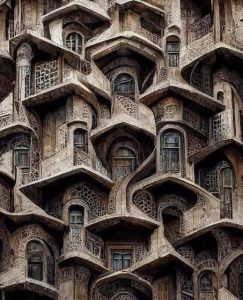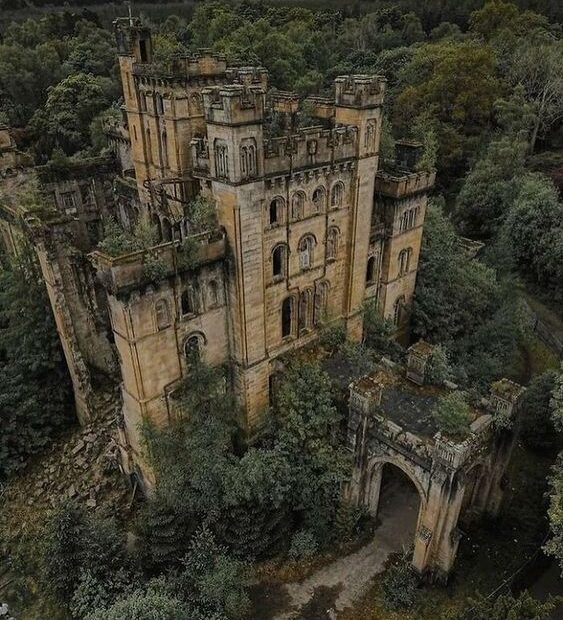Medieval Architecture of Cairo, Egypt
Medieval Cairo is a fascinating blend of architectural styles, reflecting centuries of Islamic, Fatimid, Ayyubid, and Mamluk rule. The city’s medieval architecture is a stunning testament to its rich cultural and religious heritage, a period when Cairo was one of the most important cities in the Islamic world.
The medieval architecture of Cairo is characterized by Islamic styles that evolved from the early Arab period, influenced by Persian, Byzantine, and even Coptic traditions. Key elements include mosques, palaces, madrasas (educational institutions), caravanserais, and gates, many of which still stand today as some of the finest examples of Islamic architecture.
Here’s a detailed look at the architectural highlights of medieval Cairo:
1. Fatimid Period (969–1171)
The Fatimids, an Ismaili Shi’a dynasty, established Cairo as their capital in 969 CE. They were responsible for the construction of some of the earliest Islamic structures in the city.
Key Characteristics of Fatimid Architecture:
Domes and Arches: Domes were often used in mosques and palaces, supported by large, ornate arches.
Courtyards and Gardens: The design of Fatimid structures often featured large courtyards with elaborate fountains and gardens, reflecting the Persian influence on Islamic architecture.
Decoration: Fatimid buildings were adorned with intricate geometric and floral patterns. Walls were often made of stone and brick, with decorative tilework and stucco plasterwork.
Notable Fatimid Structures:
Al-Azhar Mosque (970 CE): One of the oldest surviving mosques in Cairo, it was built as a religious school and remains a leading university today. It has a simple yet grand design, with a central courtyard and a large prayer hall, showcasing the Fatimid emphasis on functional yet elegant architecture.
Al-Hakim Mosque (1013 CE): This mosque is notable for its monumental size and its large courtyard. It is a striking example of Fatimid architectural style, with ornate stone carvings and decorative arches.
2. Ayyubid Period (1171–1250)
The Ayyubid dynasty, founded by Salah ad-Din (Saladin), replaced the Fatimids. They focused on fortifying the city and building grand defensive structures.
Key Characteristics of Ayyubid Architecture:
Fortifications and Citadels: The Ayyubids are famous for their stronghold architecture, including walls, gates, and fortresses.
Simpler and More Military: While still elegant, the Ayyubid style leaned toward the more practical and defensive, with less intricate decoration compared to the Fatimids.
Notable Ayyubid Structures:
The Citadel of Saladin (1176 CE): Built atop a hill overlooking Cairo, this fortified complex was designed to protect the city from Crusader attacks. It contains the Mosque of Muhammad Ali, one of Cairo’s most iconic landmarks. The citadel also houses a number of smaller mosques, palaces, and museums.
The Mosque of Ibn Tulun (879 CE, though also influenced by Ayyubid architectural practices): Though built earlier, its design was significantly expanded and renovated by the Ayyubids. It is one of the largest mosques in Cairo and is known for its unique spiral minaret, influenced by earlier Fatimid and Ayyubid aesthetics.
3. Mamluk Period (1250–1517)
The Mamluk era saw Cairo rise to new heights in architectural innovation and grandeur. The Mamluks, originally slave soldiers who rose to power, were responsible for much of Cairo’s Islamic architectural splendor.
Key Characteristics of Mamluk Architecture:
Domes, Courtyards, and Monuments: Mamluk buildings often featured grand domes, intricately decorated courtyards, and monumental entrances. The use of marble, stone, and woodwork became more prominent during this period.

Ornate Decoration: Mamluk architcture is known for its elaborate decoration. Marble inlays, mosaic tilework, and intricate wood carvings (often geometrically patterned) are common features.
Madrasa-Mosques: Mamluk rulers often built madrasas (Islamic schools) attached to mosques, serving both religious and educational purposes. These structures were richly decorated with calligraphy, tilework, and geometric patterns.
Notable Mamluk Structures:
The Sultan Hassan Mosque and Madrasa (1356–1363 CE): One of the most magnificent examples of Mamluk architecture, this mosque is known for its massive size, stunning marble inlays, and impressive hypostyle hall with soaring arches. The building also has an expansive courtyard and a series of crenellated walls and towers that reflect the Mamluks’ military origins.
The Mosque of Qaitbay (1480 CE): Built during the reign of Sultan Qaitbay, this mosque is a striking example of Mamluk architecture, featuring a large central dome and an intricate facade of marble and stone carvings. It also boasts an elegant prayer hall with a mihrab (prayer niche) adorned in geometric patterns.
4. Caravanserais (Khan)
As a trade hub between Europe, Africa, and Asia, medieval Cairo housed caravanserais or khan (commercial inns) along the main trade routes. These structures were designed to accommodate traveling merchants and their animals, with open courtyards, storage areas, and rooms for lodging.
Khan al-Khalili (1382 CE): One of Cairo’s most famous markets, it started as a caravanserai and is still a vibrant marketplace today. The original structure would have housed merchants and travelers, and its winding alleys and bustling bazaars preserve the charm of medieval Cairo.
5. Gates and City Walls
During the medieval period, Cairo was surrounded by defensive walls and gates, many of which still exist today.
Bab al-Futuh (1087 CE): Built during the Fatimid period, this gate is one of the most famous entrances to the old city. It is notable for its fortified design and decorative towers, which allowed for both defense and aesthetic appeal.
Bab Zuweila (1092 CE): Another prominent Fatimid gate, this structure has a distinctive double-arched entrance and is known for its minaret towers, which served as watchtowers during the medieval period.
6. The Role of Water and Gardens
Many of Cairo’s medieval buildings, especially the palaces and mosques, were designed with water features such as fountains, pools, and reflecting pools to offer a sense of tranquility in the desert climate. Islamic gardens, with carefully laid-out geometric designs, were often included as private oases or as part of public spaces.
Notable Architectural Styles and Influences
Islamic Calligraphy and Tilework: The use of intricate calligraphy and decorative arabesque patterns became an integral part of medieval Cairo’s architecture. These designs often filled the spaces between architectural elements like doors, windows, and arches.
Mamluk Woodwork: One of the most exquisite aspects of medieval Cairo architecture is the intricate woodwork found in windows, minbars (pulpits in mosques), and doors, often featuring elaborate geometric and floral designs.
Persian Influence: Elements of Persian architecture, especially in the form of domes and vaulted ceilings, were adopted and adapted by medieval Cairo’s builders.
Byzantine and Coptic Influence: The early architectural forms of Cairo, such as columns and arches, reflect the city’s earlier Christian and Byzantine history.
The Legacy of Medieval Cairo
The grandeur of medieval Cairo, with its mosques, palaces, caravanserais, and fortifications, laid the foundation for the city’s historical identity. Even today, much of this architectural legacy remains intact, offering a glimpse into a time when Cairo was not only a major religious and cultural center but also a thriving economic hub in the Islamic world. The blend of architectural styles over the centuries continues to influence the modern urban fabric of the city.
